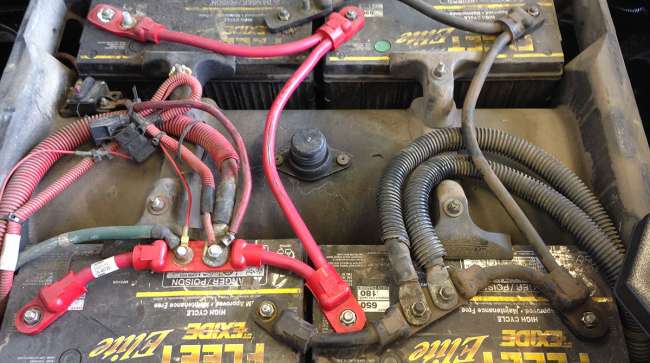Tips on Truck Electrical System Maintenance

Troubleshooting problems with a truck’s electrical system takes knowledge and experience.“Always take a systems approach when you are spec’ing and maintaining your vehicles’ electrical systems,” said Bruce Purkey, CEO of Purkey’s Electrical Consulting, which helps fleets solve their electrical system problems.
For example, when installing a larger alternator, make sure the batteries can accept the increased charging rate, Purkey said, noting the battery manufacturer should provide this information.
Mike Hasinec, vice president of maintenance support at Penske Truck Leasing, noted there is value to purchasing a high-quality battery.
“Think in terms of lifecycle cost, not just first cost,” he said.
And when batteries reach extremely cold temperatures, they simply won’t accept a charge. Insulating blankets that will prevent batteries from losing the heat created by charging can help, Purkey said.
It’s also important to ensure that the cabling is adequate for the conditions, said Chris DiSantis, director of training and field technical support at Aim NationaLease, who noted that the Technology & Maintenance Council has a recommended practice for cabling.
“When inspecting cables, make sure technicians use an ohmmeter to measure resistance rather than a voltmeter, as it will give more precise results,” Purkey added.
Clive Harley, vice president of product engineering for Prestolite Electric, said properly charged batteries are critical to long starter life. Even though low voltage from poorly charged batteries means less power and slower cranking, the starter will actually draw more current under these conditions, shortening its life, he said.
DWS Fleet Management Services CEO Darry Stuart suggests pulling the terminals apart and cleaning and inspecting them, as well as load testing the batteries at every scheduled preventive maintenance. DiSantis agreed, noting that technicians should disconnect and individually load test batteries before winter.
Hasinec also recommends using capacitors for energy storage when trucks are used in pick-up and delivery service. Penske uses several different alternator sizes, depending on the exact needs of the vehicle, he said. Higher amps, for example, are needed when there is an inverter to supply auxiliary power for driver amenities, Hasinec said.
“Make sure to use an alternator that is adequate for the total load of the vehicle,” Harley added. When a fleet has experienced occasional breakdowns, it can help to upgrade components in the aftermarket, he said, noting that higher-efficiency alternators and more powerful starters are available.
Rob Steele, application engineer with Borg Warner, parent company of Delco Remy, said that it takes 80 RPM to start a diesel. Provide only 78, and it may not crank up. He recommends careful checks of every connection — every point in the system where one wire is joined to another.
“Vibration is the enemy and loose joints won’t carry full current,” Steele said.
There must be clean copper on both sides of each connection and it must be tight. He said he knows of one major fleet that has successfully adopted heavier-than-standard cabling as a preventive measure.
Steele said there’s normally only one drive-pulley size provided for each alternator, but a fleet with a large order might be able to spec a custom pulley size. Even though downspeeding an engine puts the alternator closer to its “sweet spot,” a smart specifier might want to spec a slightly smaller-than-standard alternator drive pulley to add just a few RPMs and get ideal charging if running at a low cruise RPM, he said.




